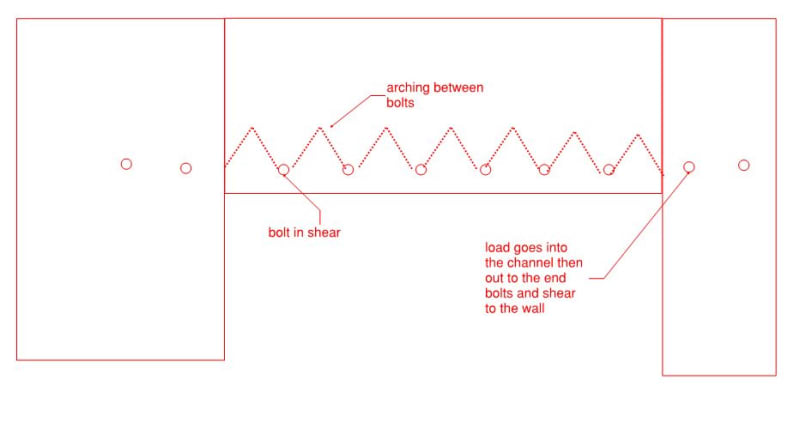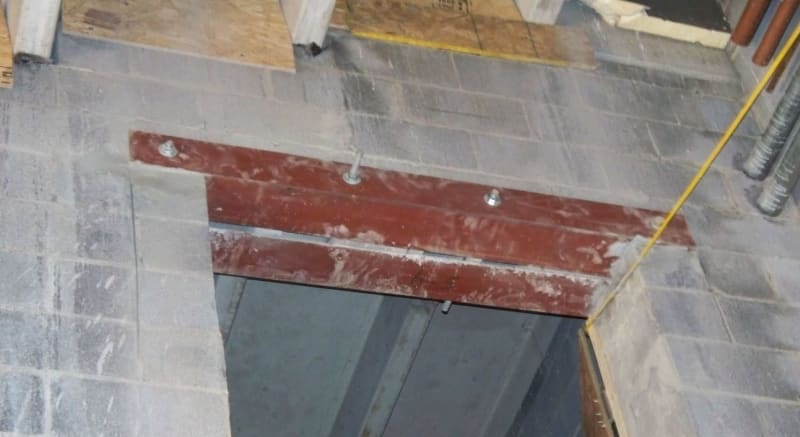I have an existing CMU wall which is made of 8" block and assumed to be unreinforced. The wall is 17' tall and we want to create an opening that is 11' wide by 12' tall. I want to use 10" channels on each side of the block above the new opening. There will be through bolts connecting the the channels through the CMU. I need to determine the required size and spacing of the bolt steel. Has anybody used shear friction to carry the wall load to the channels? The idea is to leave a 3/4" gap between the channel and the CMU wall to be filled with grout, which would mean the block would have to slip out from between the channels, which would mean that the through bolts would have to elongate first.
Additionally, we do not want steel columns on either side of the opening. Has there been any consensus on using through bolts in bearing as an end reaction? If the shear friction concept above works for the span, could it also work for the end reaction?
Additionally, we do not want steel columns on either side of the opening. Has there been any consensus on using through bolts in bearing as an end reaction? If the shear friction concept above works for the span, could it also work for the end reaction?



